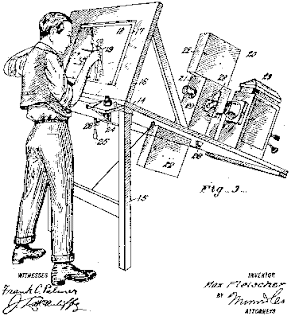15th of November 2010 (week1)
Last week we were given an assignment to use soundtracks will be given in class to create our own animation. My plan is to divide the week so I have into designing the storyboard using the dope sheet make the rough animation and finish off with the final animation.
Week 1 | Week2 | Week3 |
Reference, research, planning out, storyboard and dope sheet | Quick sketch animation and testing | Lining (colouring possibly), final animation and final review |
For my references I have been looking on the Internet and using my book of cartoon animations to get an understanding of the characters I will be creating for my animation. At first I looked for characters that were complete opposites to gain understanding of design for my own characters but went into a bit more depth finding characters not only of opposites but sizes. From that I design my characters making one my characters loud, annoying and small while the other large, shy and timid.
My idea for this animation is purely based around a simple and common plan where a small grey squirrel and a chipmunk fighting. A small squirt is grouchy, quick-tempered and restless and slightly paranoid while the other character a chipmunk is slow, easy-going and slightly jumpy. For these two characters I have been designing references to suit their voices from the audio to the characters as well as research on the animals they are based on.
From the audio I created a story that was interesting, funny, and very over exaggerated movements with that in mind I listened over the audio to get a story based. From what was given to me in the audio I started off with creating a fight scene between the two characters where the squirrel believed that the chipmunk had stolen something from him. After a couple of sketches later I decided to make it more interesting by using the end line said in the audio in different contexts instead of it being the chipmunk this world turns around and point at a person behind them believing he stole it.
After creating my storyboard and animatic I then began planning out my dope sheet. From the audio I counted out how many frames I would need to pronounce certain words and sentences and then cut scenes up. This is my first time using a dope sheet and though it was confusing to use I have a certain amount of understanding on how worked.
Before moving on to making the rough sketch of my animation I first acted out the scenes that were going to happen within the animation first to see if they fitted. From acting out scenes with another person to help me I was able to get a better understanding of what to do within the scene to make it more realistic still over reacting movements from the acting I got an idea which I would add to one of the scenes of my animation.
22nd November 2010 (week2)
after doing the references and getting the research needed for my animation I then moved on to creating quick sketches of the animation testing before lining it for the final project. After watching the animation test I realise that I created too much of a long gap in one of the scenes and realised their mistake. To see what I could do to fill in the long gap I went back to my storyboard and thought out what would feel it in from this I used one of the scenes as the starter by the characters were taught to come forth to each other. After doing a second test with the new scene in giving its a check over I decided to move on to making the final project of the animation.
first animation test
29th of November 2010 (week3)
In the end result I was quite pleased with how everything turned out the lining I added to the animation made more distinct and stands out as well as the acting that was put into the animation to give the characters more movement. From this animation I have learnt much about using a dope sheet in planning ahead before going into the final result from it I created a believable scene that I believe was creative and funny as well. There were some things that I wish I could have done to this animation such as creating to be more fluent and had better timing with mouth movement.












